|
|
ADDRESS AT THE SESQUICENTENARY CELEBRATIONS OF THE PUNE INSTITUTE OF ENGINEERING AND TECHNOLOGY, PUNE
01-02-2005 : Pune
Technology leads to Non-Linear Progress
?Everyone has inside of him or her, a piece of good news.
The good news is, that you don?t know how great you can be!?
I am happy to participate in the Sesqui-Centenary celebrations of Pune Institute of Engineering and Technology, Pune. My greetings to the Director, Faculty Members, students, participants and distinguished guests. The Pune Institute of Engineering and Technology, (formerly Government College of Engineering, Pune) established in the year 1854 is one of the oldest institutions in the country. From a certificate awarding institution this institute has recently been granted Full Autonomy by the Government of Maharashtra, and University Grants Commission. All the undergraduate programs run by the institute are accredited by the National Board of Accreditation. The college has introduced unique sandwich course in various disciplines since 1977. The course is popularly known as Poona Model.
I am very happy to be in Pune Institute of Engineering and Technology which has a tradition, history, and has created thousands of engineers, from graduates to doctorate level. I congratulate the institution for its excellent performance. I was thinking what thoughts that I can share with the institution of Sesqui-Centenary establishment. The topic I have selected for discussion today is ?Technology leads to Non-Linear Progress?.
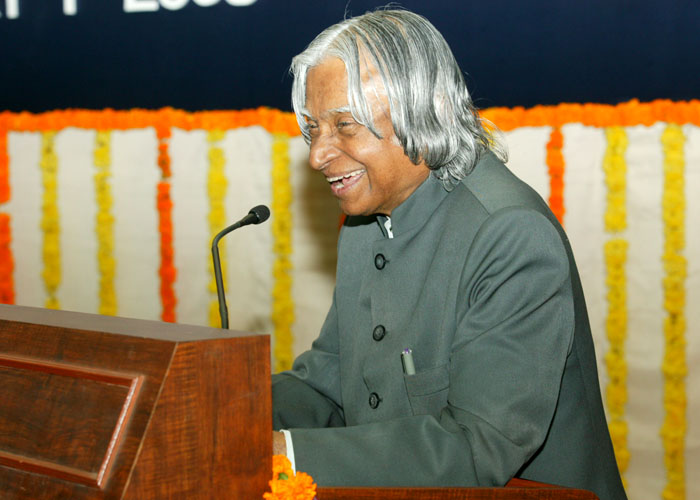

Lives that can change
Friends, I have a special interest in studying the personalities who have changed the course of human lives. In this respect three personalities have inspired me. CHARLES DARWIN, who propounded the theory of ?Natural Selection?. He made us think differently about how the evolution of human being took place. Thomas Alva Edison, who invented electricity, which is, indeed revolutionized every field of science and technology and human life. Electricity is indeed the foundation for the growth of human life today. Mahatma Gandhi, whose Ahimsa Dharma movement against racial discrimination in South Africa and fought against British rule in India through non-violence. He not only got freedom for billion people of India, but became the forerunner for freedom movements for many countries in our planet. Jamsetji Nusserwanji Tata fought for India?s independence through visionary actions for Indian steel and power industry and scientific and technological institutions.
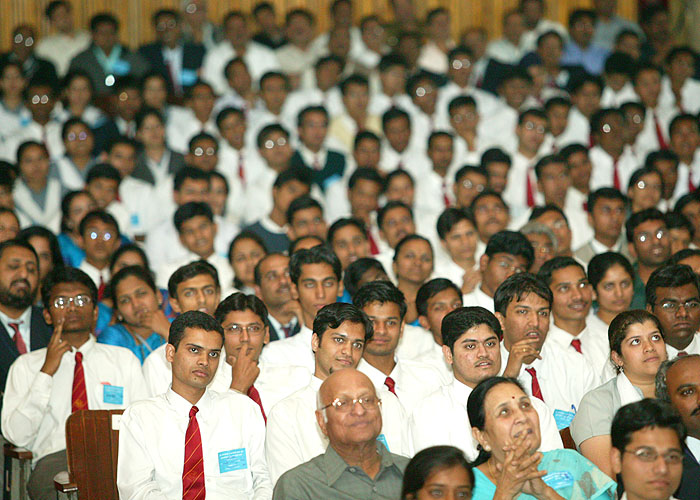

Three missions of JN Tata
Jamsetji Nusserwanji Tata laid the foundation for three important areas. The first was the sowing of seeds for TATA Iron and Steel Plant, second to create hydro-electric power station, third was establishment of an educational and research institute popularly known as TATA institute now known as Indian Institute of Science, Bangalore. Though Jamsetji Nusserwanji Tata envisioned all these institutions before his death in May 1904, the IISc-Bangalore opened its doors in 1911. The first ingot of steel rolled out from Tata Iron and Steel Plant in 1912. The hydro-electric power was switched on in Mumbai in 1915. Today, after 100 years of his demise we see all these three institutions flourishing and they are in their full bloom. IISc has become a world class branded institution. Tata Steel has crossed the 5 million tons per year steel output. The Tata Hydro Electric Station has given birth to many power plants in the country. Tata?s vision has brought a revolution in steel industry, power generation and education. I admire this great visionary, a visionary revolutionist who evolved a new method of working towards India?s freedom through development of industry, power and scientific research. The light he lit in our country has lit many lamps and is still lighting.
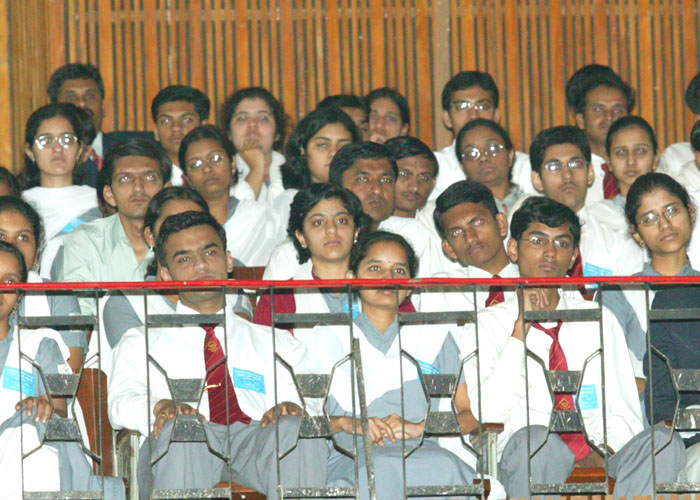

Removal of poverty is the challenge
In British India, a revolutionary thinker was there to think about the three great institutions that we have today. Among the people who have assembled here young and old, there may be a few who would like to fight another enemy in the context of transforming India into a developed nation. Who is that enemy? I would like to narrate an incident, which took place when I was the Principal Scientific Adviser to the Government of India. I visited Anand, which is the home for the white revolution visionary my friend Dr. Verghese Kurien. After attending IRMA convocation, I talked to the students at Anandalaya high school. After my presentation to them about how we should live in a developed India, and how the young should work for it, one boy got up and asked me, ?Mr. Kalam, can you please tell me who is our enemy?? I turned the question to the student community to discuss and find a proper answer, because the question was very thought provoking. Students actively discussed and argued and finally listed various types of enemies such as political system, corruption, lack of infrastructure, education etc. But one girl Snehal Takkar, a 10th standard student, said ?India?s number one enemy is Poverty?. We all have to forget about caste, religion or language and unitedly fight against this enemy. Friends, the girl?s challenge, I am returning to you because, you are the most powerful members of the society. You come from different walks of life such as industry, science, technology, academy, legal and other professions. The vision for developed India has to be transformed to a developed nation in a competitive world. In this context I would like to discuss the law of development.
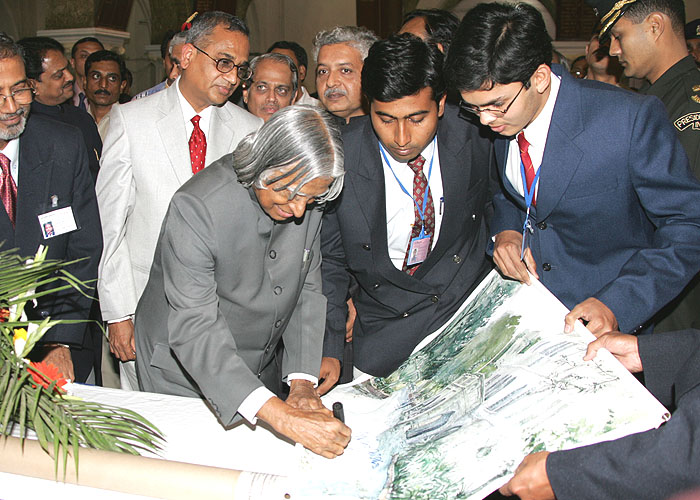

Law of development
I was studying the development patterns and the dynamics of connectivity between nations, especially in trade and business. As you all know the world has a few developed countries and many developing countries. What is the dynamics between them and what connects them? Developed country has to market their products in a competitive way to different countries to remain as developed country. A developing country to get transformed into developed country; also has to market their products to other countries. Competitiveness is the deciding factor for the successful business and trade. Competitiveness has three dimensions: quality of the product, cost effectiveness and supply in time. Indeed this dynamics of competitiveness in marketing of products by developing and developed countries is called the ?law of development.? Technology is the key to competitiveness. Academia and research institutions must provide this input to the industry for making our products competitive, to enable India to become a developed nation in less than two decades. This will enable India to become a Knowledge Society.
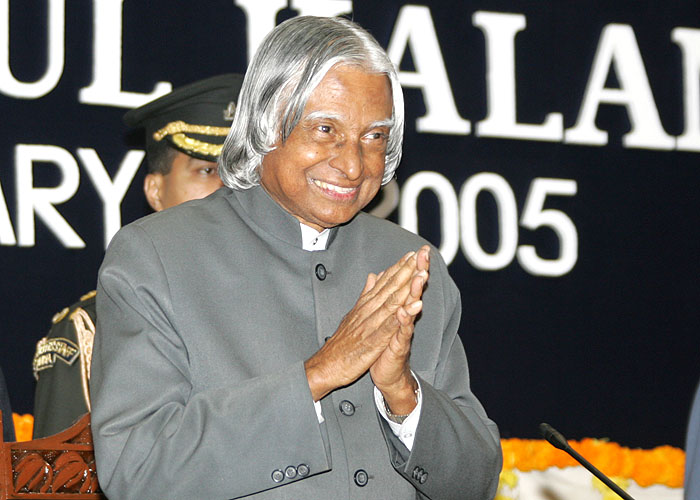

Economic Growth in different societies
During the last century, the world has undergone a change from agriculture society, where manual labour was the critical factor to an industrial society where the management of technology, capital and labour provided the competitive advantage. Then the information era was born in the last decade, where connectivity and software products are driving the economy. In the 21st century, a new society is emerging where knowledge is the primary production resource instead of capital and labour. Efficient utilization of this existing knowledge can create comprehensive wealth of the nation and also improve the quality of life - in the form of better health, education, infrastructure and other social indicators. Ability to create and maintain the knowledge infrastructure, develop knowledge workers and enhance their productivity through creation, growth and exploitation of new knowledge will be the key factors in deciding the prosperity of this Knowledge Society. Whether a nation has arrived at a stage of knowledge society is judged by the way the country effectively deals with knowledge creation and knowledge deployment in all sectors like IT, Industries, Agriculture, Health Care etc. For globally competitive we have to add innovation to our existing knowledge.
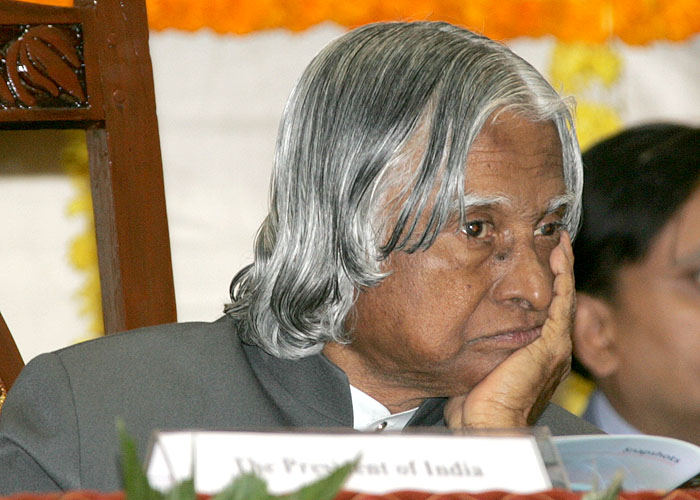

Innovation is the capital
I was studying the Global Competitiveness Report for the year 2003-04. There I find in terms of Innovative Capacity Index US is ranked one, Singapore 6, South Africa 27, China 40, Brazil 42 and India 44. In the same report I noticed that the proportion of Scientists and Engineers Index is stated as US 4, Singapore 6, South Africa 38, China 43, Brazil 51 and India 60. Thus, we can see the large proportion of new ideas and innovation are generated in the Universities in USA. This innovation arises from private sector initiative and the R & D productivity of the firm, shape by local policies and nature of local institutions. National innovative capacity has to be the country?s important potential to reinforce both political and economic entity with commercially relevant competitive products. This capacity is distinct from purely scientific or technical achievements and focuses on the economic application of new technology. Thus, for building innovative capacity, we require the partnership of private sector, public sector, R & D and academia as a group. I would recommend the Pune Institute of Engineering and Technology to work towards building the innovative capacity amongst its faculty and students impart knowledge with students.
To achieve a goal what is needed is not only knowledge, but also a passion. The passion should not be limited to the technical aspects but it should also aim towards creating a concern for the society with a view to finding positive solutions to the problems.

Team building
Most of the discoveries and innovation are team efforts. Education system should work towards team building among the students. Every student must have an opportunity to play the role of a team member and a team leader so that he can see both sides of the fence. The amount of information that we have around us is overwhelming. The management of knowledge therefore must move out of the realm of the individual and shift into the realm of the networked groups. The students must learn how to manage knowledge collectively. When the information is networked the power and utility of the information grows as squared as predicted by Metcalfe's law. Information that is static does not grow. In the new digital economy, information that is circulated creates innovation and contributes to national wealth. In this context, let us discuss the national scenario and its priorities.

Our National mission - challenges
Our nation is going through a major challenge of uplifting of 260 million people who are below the poverty line. They need habitat, they need food, they need health care, and they need education and employment and finally resulting in a good life. Our GDP is growing at more than 6% per annum. Whereas, the economists suggest that to uplift the people below poverty line, our economy has to grow at the rate of 10% per annum consistently, for over a decade.
Integrated action: To meet the need of one billion people, we have the mission of transforming India into a developed nation. We have identified five areas where India has a core competence for integrated action:
1. Agriculture and food processing
2. Reliable and Quality Electric power, Surface transport and Infrastructure for all parts of the country
3. Education and Healthcare
4. Information and Communication Technology
5. Strategic sectors.
These five areas are closely inter-related and if well done would lead to food and economic security and national security.
Essential Connectivities: The integrated methods, which will bring prosperity to rural India is PURA (Providing Urban amenities in Rural Areas), which has four connectivities. The physical connectivity of the village clusters through quality roads and transport; electronic connectivity through tele-communication with high bandwidth fiber optic cables reaching the rural areas from urban cities and through internet kiosks; knowledge connectivity through education, vocational training for farmers, artisans and craftsmen and entrepreneurship programmes; these three connectives leading to economic connectivity through starting of enterprises with the help of banks, micro credits and marketing the products.

Networking of Engineers and Technologists
I would suggest the Pune Institute of Engineering and Technology to create a website for your alumni. This can become a common platform for providing connectivity amongst thousands of engineering professionals particularly the alumni of this institute working in different parts of the world. The website can document the case studies and special technology routes followed by different specialists and innovative solution found for complex engineering problem. You could also include provision for students of this institute to ask questions about his specific engineering problems connected with his project which can be answered by a panel of specialist engineers in different disciplines. This will lead to automatic generation of world-wide engineering database which will be useful for the faculty of this institution to give real life examples as course materials. Also, the alumni of this institute can create certain number of PURAs in their region as a collective contribution towards societal transformation.

Conclusion: Creative Leadership
There are 540 million youth below 25 years in the population of a billion people. The nation needs young leaders who can command the change for transformation of India into a developed nation embedded with knowledge society. The leaders are the creators of new organizations of excellence. Quality leaders are like magnets that will attract the best of persons to build the team for the organization and give inspiring leadership even during failures of missions, as they are not afraid of risks. I have seen and worked with creators of vision and missions.
One of the very important ingredients for success of the vision of transforming India into a developed nation by 2020 is the evolution of creative leaders. I am giving a connectivity between developed India, economic prosperity, technology, production, productivity, employee role and management quality, all of which linked to the creative leader. Who is that creative leader? What are the qualities of a creative leader? The creative leadership is exercising the task to change the traditional role from commander to coach, manager to mentor, from director to delegator and from one who demands respect to one who facilitates self-respect. The higher the proportion of creative leaders in a nation, the higher the potential of success of visions like ?developed India.?
My best wishes to all the members of this Institute during this Sesquicentenary year for success in their missions of creating creative leaders in engineering and technology.
May God bless you.

Questions and Answers
1. Sir, it is said that four years of technical education are the potter?s hand in wet clay. How do you think the four years of Aeronautical Engineering at Madras Institute of Technology moulded you to face the challenges in your career?
- Manasa Kane: TE (E&TC)
Ans. I was given a six month project for developing a low level attack aircraft along with six of my class mates during the final year of aeronautical engineering course. One person studied propulsion and engine selection, another studied the aircraft structures and materials, the third student looked at the control system, fourth student studied aerodynamic design and two of us were responsible for integration of multiple systems culminating in an integrated aircraft to meet the performance requirements. This task was the real foundation for me in learning in an integrated way to work with the team and to evolve system engineering and system management concepts. Prof. Wrepenthin, was responsible in designing such a project for the students.
2. You are a scientist as well as well as a staunch believer in God. So who do you think created the universe ? The Big Bang or God.
- Ganesh Talele: TE(Computer)
Ans. God first created the human being, it took million and millions of years to get the right human form. He went on experimenting and finally he realized the human configuration he wanted. Once realized, He gave life. First the man opened his eyes and said, ?I thank you, Almighty. Second thing he did, he smiled. Almighty was very happy, that his creation has done two right things. Then, God was preoccupied for some time, later when God looked at the man and found something is missing in him. He generated the fire in milli-seconds and created Shaitan (devil) out of the fire. He asked Shaitan to prostrate before the first human being as he is His image. The Shaitan refused to prostrate. He said, ?Oh! Almighty you have created me out of fire, I am a superior creation?. The God was taken back. He thought for a while and decided to integrate the man and Shaitan into a one single system, that are the human beings what we are. This human being is the creator of Big Bang theory.
3. You have brought a lot of dynamism to the President?s office. You have interacted with the masses, the classes and the elected representatives. Do you think our democratic structure mirrors the masses?
- Gauri Joshi SYBtech. (Mechanical)
Ans. There is no other alternative other than a democratic society. We don?t want to live in a dictatorial society.
4. Sir, we draw inspiration from personalities like you. Who do you draw inspiration from and why?.
- Ninad Bodas SYBTech. (Civil)
Ans. I draw inspiration from my elementary school teacher Shri Shivasubramania Iyer, Indian space visionary Prof Vikram Sarabhai and Prof Satish Dhawan.
5. To achieve your vision 2020, what kind of leadership does India need?
- Mr. Shakti Sinha TE(Computer)
Ans. We need creative leaders, which I had discussed in the concluding part of my talk.
6. How has life changed for you from being the Father of India?s missile technology to becoming the President of India?
- Arundhati Sawant BE (Metallurgy)
Ans. I had a mission. The technology mission to transform India into a developed nation evolved by TIFAC, I was the chairman at that time. With this roadmap, I was presenting in multiple forums and wrote a book on that with one of my friends. When the offer came to become the President, I felt that the right place to market the concept is the Parliament and the political system.
7. What can be done to make politics a respectable mainstream career option for the younger generation?
- Ravi Ramani SYB.Tech.( Mechanical)
Ans. Only the youth of India have to change and rejunuvate the political system. A political system that can give a vision to the people, a political system that can empower the people, a political system that can be free from corruption. That political system has to be noble as it was during the first independence struggle and it should protect the democracy and the people including the children and women. The day the children and women are not safe in a nation, then the political system has to take the responsibility and be accountable to its citizens.
8. Does the fact that your work includes weapons of mass destruction bother you?
- Ms. Suparna Kalghati SYB.Tech. ( Mechanical)
Ans. I would like to recall an incident from the Indian history. India has witnessed the great war of Kalinga in 261 BC which took place in Orissa. A fierce battle of that time after seven days in Kalinga it was a great victory for Emperor Ashoka. He loved conquering lands, it was his last war to conquer a great part of India. After victory of Kalinga war, emperor Ashoka wanted to celebrate the victory He with all the happiness majestically walked through the battle field that night. It was a full moon night. He saw nearly hundred thousand people were killed and more than hundred thousand people were wounded. He looked at the beautiful moon and even the moon was red with sorrow. The emperor said, "Oh, Almighty what have I done? What a pain and tragedy I have inflicted on the humanity. Please give me strength to bear what I have done on this day". And prayed to God to give him enlightenment. This resulted in the birth of Ahimsa Dharma, which is symbolized in our Ashoka Chakra. During the last three thousand years India has been the venue for many battles which were fought between two parties who were not Indians. We should not allow such situation to happen now. To ensure that we have to be strong since ?strength alone respect strength?. However, the possession of nuclear weapons does not make us an aggressor. We have a clear policy of ?no first use?.
9. Being a Vedic scholar, how are the Vedas relevant in this age?
- Asif Shaikh TE (Mechanical)
Ans. I remember the famous statement in Manu Shastra ?Gift is always accompanied by some purpose and a gift is a dangerous thing. It is like touching a snake and getting the poison in turn.? This statement stands out even now in my mind. Similarly, in Mahabharata I like the character of Vithura who is an embodiment of straightforwardness in thinking and action.
10. As a technical institution, what are the qualities we should inculcate?
- Priyanka Kharat TE (Electronics & Telecommunication.
Ans. For participating in the nation building tasks, the capacities required to be built among the students in their formative years by the educational institutions are: The capacity for research or inquiry, the capacity for Creativity and Innovation, particularly the creative transfer of knowledge, the capacity to use high technology, the capacity for Entrepreneurial Leadership and the capacity for Moral Leadership. Also The students coming out of this institution should be professionally competent, innovative, righteous and creative leaders.
<<Back
|
|